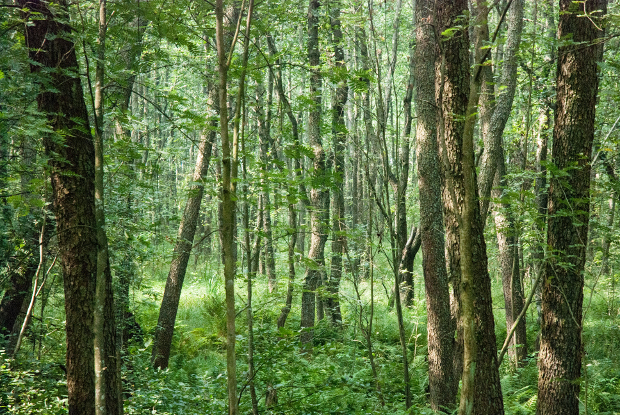Forest

Case - Published 27.6.2014
One-third of the Earth’s surface is forest. In Finland, forest coverage is 75 percent – well over twice the global figure. There are 4.5 hectares of forest per person in Finland. Our forests are part of the boreal forest belt or northern coniferous forest belt, which covers about 15 percent of the Earth’s land area.
Only 31 of the 45,000 tree species of the world thrive in the northern climate, in our barren and acidic soil. A total of 97 percent of our trees are pine trees, spruces and birch trees. Pine is the main species in about half of our woods, but the majority of our woods are mixed forest, which means that there are also other species.
The total volume of wood in Finnish forests is approximately 2,306 million cubic metres. The volume rises each year, as the annual forest growth has been exceeding the felling volume for many years. The destruction of forest has been prohibited in Finland since the first act on forests was passed in 1886. Today, it means that when woods are felled, new trees must be planted within five years of felling.
On average, just over two percent of the forest area is felled in Finland each year. One-third of it is final felling, which means that nearly all trees are felled, and two-thirds is intermediate felling, which means thinning the forest to provide more space for growing trees. Each year, 150 million trees are planted in Finland. Trees are also planted from seed after felling, but about four-fifths of trees in Finland grow naturally.
Sustainable forestry combines three objectives. The ecological carrying capacity of nature must not be reduced, which means that the environment can only be altered to a point where nature can still recover from the change. Nature’s own processes are mimicked in forest management. Secondly, the social and cultural values of forest must not be reduced. And thirdly, forestry must be economically viable for all parties involved. With these three principles, we can harvest ecologically, socially and economically sustainable raw wood materials for the forest and pulp industries.
Through the ages, forests have given people shelter, food resources, construction materials and, in more recent times, raw materials for industries. At a more fundamental level, forests provide ecosystem services which maintain life on Earth. Forests and swamps are carbon guzzlers and important carbon stores. They maintain the circulation of nutrients and water and produce oxygen. Forests play a major role in regulating the climate, reducing flooding and purifying groundwater, while tree roots prevent erosion. Forests are home to innumerable species. The ecosystem services also include cultural services. People can use forests for recreation and relaxation. Hiking in forests has been proven to improve our mental and physical well-being.
The Finnish forest is always open, goes the saying. Everyman’s rights guarantee that everyone in Finland is free to enjoy nature regardless of who owns the land. Today, the majority of everyman’s rights are laid down in law, but they were founded on age-old customs. Not all activities are permitted, though: other people, animals and vegetation must be given consideration.
Text and photos are from the info cards in the presentation briefcase on the Finnish forest sector. The idea of a briefcase with various kinds of samples to present this diverse sector came from the young people themselves. The briefcase has been handed out at visits to upper secondary schools.
More information on the briefcase and visits: vilma.issakainen(@)smy.fi and anne.kettunen(@)forestindustries.fi.
